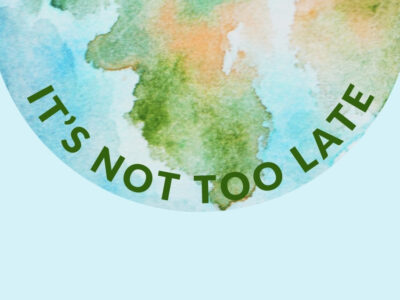Interior adopts scientific integrity guidelines
Interior Secretary Ken Salazar has formalized the Department’s guidelines on scientific integrity and created the new position of Scientific Integrity Officer, to be filled by Dr. Ralph Morgenweck, Senior Science Advisor at the Fish and Wildlife Service. The guidelines are the first agency effort out of the blocks after the White House Office of Science and Technology Policy issued a long-delayed Memorandum providing general guidance on ensuring scientific integrity but leaving the details to individual agencies. (I criticized the OSTP memorandum here.) They’re a good start, but still too focused on conventional research misconduct with not enough recognition of the distinct problems of the regulatory context. And they come without any explanation, which makes it difficult to evaluate changes from the draft floated last September.
Interior’s new guidelines have gotten a mostly warm reception from scientific integrity watchdogs at the Union of Concerned Scientists and Public Employees for Environmental Responsibility, although both organizations emphasized that many details still needed to be filled in and more would need to be done to change agency cultures.
There is no doubt that the new guidelines are a substantial improvement on last fall’s proposal, which was roundly criticized for focusing only on career agency scientists while apparently giving political appointees (like the infamous Julie MacDonald) a free pass. This version explicitly applies to:
All DOI employees, including political appointees, (hereafter employees) when they engage in, supervise, manage, or influence scientific and scholarly activities, or communicate information about the Department’s scientific and scholarly activities, or utilize scientific and scholarly information in making agency policy, management or regulatory decisions.
And it provides that decisionmakers (among other things):
will not engage in dishonesty, fraud, misrepresentation, coercive manipulation, censorship, or other misconduct that alters the content, veracity, or meaning or that may affect the planning, conduct, reporting, or application of scientific and scholarly activities.
That language would seem to take care of one of the most troubling aspects of the Julie MacDonald story, which was that the Inspector General could not find any legal prohibition on MacDonald’s repeated (and sometimes successful) attempts to bully career scientists into altering their recommendations.
The appointment of an agency scientific integrity officer is also an improvement from the draft, elevating the profile of the issue and putting the agency leadership squarely behind it in a way that promises real follow-through. Dr. Morganweck appears to be a great choice for the position; he publicly stood up to former FWS southwest regional director (and later Director) Dale Hall when Hall directed his staff not to update their thinking about the genetics of protected species in the recovery planning process.
Still, from my perspective the guidelines suffer from the persistent failure to clearly differentiate between “scientific integrity” in the regulatory context and “scientific misconduct” in the research context. That confusion has held back efforts to develop useful guidelines. It was, I think, responsible for the earlier focus solely on science staff, and it’s only been partially remedied in this version.
“Scientific misconduct” is a serious departure from the norms of scientific research. It was defined a decade ago by OSTP as the falsification or fabrication of data or plagiarism of the work of others. Federal research and research funding agencies are required to put in place regulations and policies for dealing with misconduct by their researchers. Of course scientific misconduct in that sense is a serious problem, but it’s mostly a problem for the research enterprise. It can spill over into the regulatory arena, but that’s pretty rare.
The problem in the regulatory context is typically a very different one. Regulatory “scientific integrity” is primarily about who makes judgments interpreting equivocal data, on what basis, and whether the public is given access to all the information it needs about the science that informs policy decisions. It is a problem related as much to the norms of the political process as to the norms of scientific research (as I’ve argued in this paper).
Interior’s new rules get halfway to that conclusion, and therefore only halfway to addressing the real problem. As explained above, they do recognize the role of those who use (rather than simply produce) scientific analyses. And they implicitly note the importance of different kinds of judgment, calling on scientific staff (but oddly not on decisionmakers) to:
clearly differentiate among facts, personal opinions, assumptions, hypotheses, and professional judgment in reporting the results of scientific and scholarly activities and characterizing associated uncertainties in using those results for decision making, and in representing those results to other scientists, decision makers, and the public.
But it says too little about the role of decisionmakers. They have to do more than not bully their staff. They should, for example, have the same explicit obligation to be clear about the basis for their judgments connecting the available information to a policy choice. They should have to explain where they view the boundaries of their discretion falling, what role they think the relevant statutes and regulations assign to science and other factors, and what importance they’ve assigned to the risk of different sorts of errors.
The policy is also thin on transparency. It says the right thing, but at too high a level of generality. It declares that the Department will:
Document the scientific and scholarly findings considered in decision making and ensure public access to that information and supporting data through established Departmental and Bureau procedures—except for information and data that are restricted from disclosure under procedures established in accordance with statute, regulation, Executive Order, or Presidential Memorandum.
We need to know more about what that means. When will the Department claim exemptions from disclosure, for example, based on the deliberative process exemption from the Freedom of Information Act? Regulatory scientific integrity requires that the unvarnished and unredacted scientific recommendations of staff to decisionmakers be made available to the public.
The lack of detail points up another general failing. Perhaps the details can’t all be contained in the policy itself. But the principles behind the policy could, and should, be explained in an accompanying memorandum. The September draft was published in the Federal Register with some explanation. Why not do the same with the final policy? It differs in significant respects from the draft; an explanation of those changes, at least, would be welcome. Why, for example, did the Department ultimately decide to put the investigative function in the Office of the Secretary (surely the most political arm of the entire Department) rather than the office of the Inspector General (as it had initially proposed)? There may well be good reasons for the change, but they aren’t apparent on the face of the policy.








Reader Comments